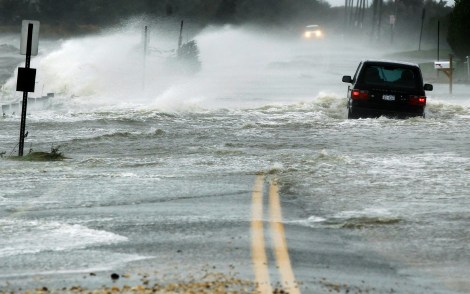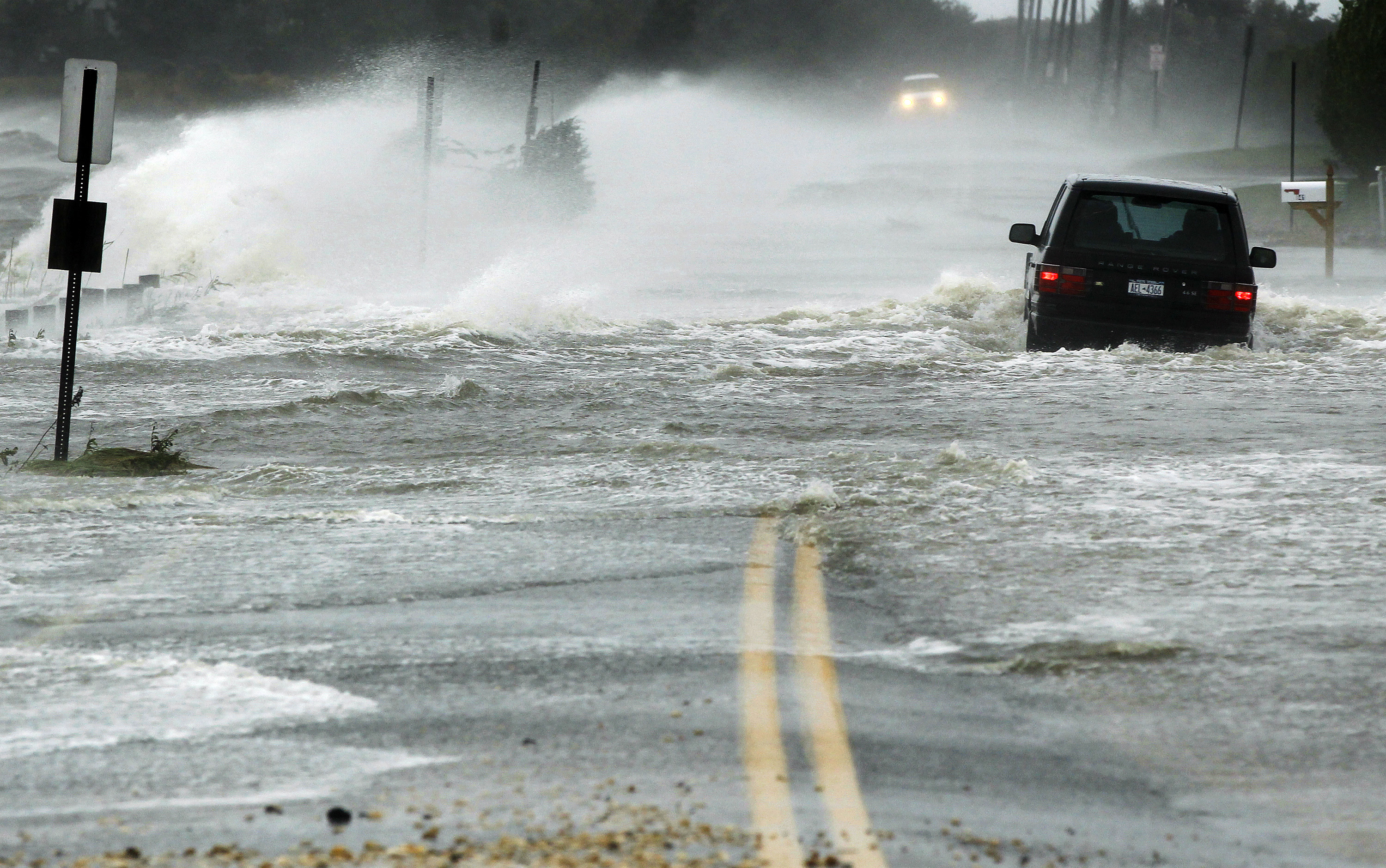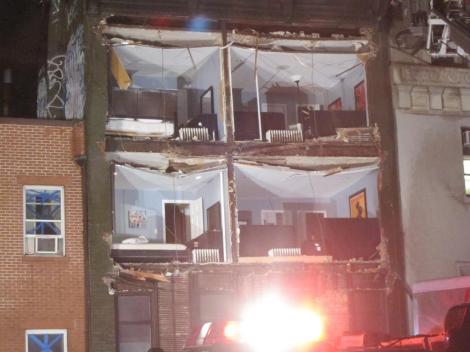It’s been a banner year for extreme weather conditions, from the drought that held the country hostage this summer to superstorm Sandy. But then, last year was a banner year for extreme weather too. And the years before that …

Scientists are mostly agreed that climate change has had a hand in crafting the Frankenstorm. But how, exactly? From Boing Boing:
When the clouds have passed and everybody is done sleeping in airports, people are going to want answers. Was this an unavoidable act of nature? Or was this something caused directly by changes to Earth’s climate that have happened because we burn fossil fuels which increase the concentration of carbon dioxide in the atmosphere?
Well, both. There are multiple factors that came together to whip up Sandy, and no one causal judgment, however attractive, is fair. But given the evidence, it’s likely that no matter how Sandy came in to this world, climate change has helped this storm grow bigger, go faster, and head farther than it might have in earlier times and cooler seas.

Oliver RichLong Island, N.Y.
In chalking up Sandy to climate change, we should remember all the damage we’ve already done that hasn’t manifested in the form of an apocalyptic storm system nearly the size of Mexico. All that stuff plays into how Sandy acts now, from ocean temperatures and levels to our new general, um, moistness. From Mother Jones:
Explains meteorologist Greg Holland of the National Center for Atmospheric Research: “I have no equivocation in saying that all heavy rainfall events, including this one, have an element of climate change in them, and the level of that contribution will increase in the future.”
Sandy is only the most recent in the monster fall/winter storm phenomenon that scientists have been tracking for years. But at the nexus of warming temperatures, melting sea ice, and rising ocean levels are the atmospheric “blocking events” that shift jet streams further from normal fall rains and closer to apocalyptic surges. From climate researcher Jennifer Francis at Dot Earth:
Blocking happens naturally, of course, but it’s very possible that this block may have been boosted in intensity and/or duration by the record-breaking ice loss this summer. Late-season hurricanes are not unheard of either, but Sandy just happened to come along during this anomalous jet-stream pattern, as well as during an autumn with record-breaking warm sea-surface temperatures off the US east coast. It could very well be that general warming along with high sea-surface temperatures have lengthened the tropical storm season, making it more likely that a Sandy could form, travel so far north, and have an opportunity to interact with a deep jet-stream trough associated with the strong block, which is steering it westward into the mid-Atlantic. While it’s impossible to say how this scenario might have unfolded if sea-ice had been as extensive as it was in the 1980s, the situation at hand is completely consistent with what I’d expect to see happen more often as a result of unabated warming and especially the amplification of that warming in the Arctic.

Rising sea levels — eight inches higher on the Eastern seaboard than 100 years ago — have also allowed Sandy to thrive, boosting the storm’s proximity to landfall and supercharging surges. From The New Yorker:
The number of what [insurance company] Munich Re refers to as “weather-related loss events,” and what the rest of us would probably call weather-related disasters, has quintupled over the last three decades. While many factors have contributed to this trend, including an increase in the number of people living in flood-prone areas, the report identified global warming as one of the major culprits: “Climate change particularly affects formation of heat-waves, droughts, intense precipitation events, and in the long run most probably also tropical cyclone intensity.”
As with any particular “weather-related loss event,” it’s impossible to attribute Sandy to climate change. However, it is possible to say that the storm fits the general pattern in North America, and indeed around the world, toward more extreme weather, a pattern that, increasingly, can be attributed to climate change.
Still, one thing Sandy probably won’t change is where we choose to settle and build our cities. Despite those rising sea levels, superstorms, skyrocketing insurance costs, and collapsing buildings, New York’s population is rising about 1 percent each year, and the dreaded Zone A is ground zero for some of the city’s hippest new developments. (The city is second only to New Orleans in number of people “living less than four feet above high tide — nearly 200,000.”)
Climate change has hit us hard this year. Hurricane Sandy is only our most recent apocalyptic weather nightmare. But trying to discern the exact causal relationship between the two is like trying to snag that last $5 bottle of organic table wine at the Trader Joe’s. It’s not going to happen. Instead, let’s take stock of what we’ve done and what horrors may boil over next. Unfortunately you’re going to need that wine, because it’s only going to get crazier from here, folks.




